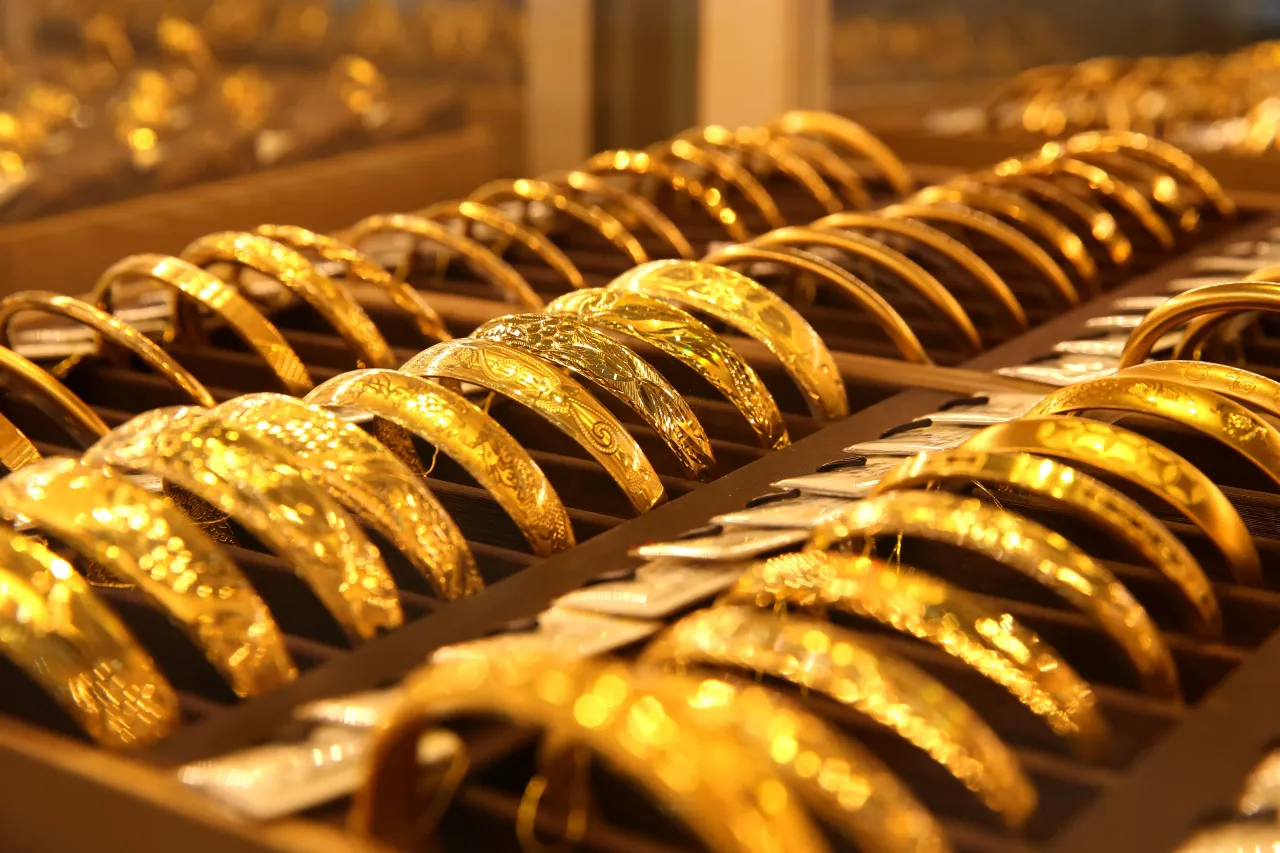Advertisement|Remove ads.
Gold Races To New Record As Safe-Haven Rush Builds – Next Stop Could Be $4,500

Gold raced to a new record high on Monday as investors piled into safe-haven assets amid renewed U.S.–China trade tensions and growing expectations that the U.S. Federal Reserve could soon start cutting interest rates.
Spot gold climbed 1.5% to $4,067.79 per ounce as of 0700 GMT, after briefly touching an all-time high of $4,078.05 earlier in the session.
A Familiar Pattern, Decades In The Making
SEBI-registered analyst Rakesh Singhal said gold’s latest surge is part of a familiar long-term rhythm that has repeated across generations, with sharp peaks, deep corrections, and long periods of rebuilding before the next breakout.
He traced the pattern back to 1980, when gold first hit about $916 per ounce during a wave of runaway inflation, oil shocks, and the end of the Bretton Woods dollar system.
That rally eventually gave way to a two-decade slide, bottoming around $254 per ounce in 1999 as the dollar strengthened and inflation cooled. The next major bull run began in the 2000s, fueled by the 2008 financial crisis and a wave of global quantitative easing, pushing gold to $1,925 per ounce in 2011, marking a 31-year high that reflected deep investor anxiety about paper assets.
From Pandemic Panic To Record Territory
Singhal said history repeated itself after 2011. Gold fell back to nearly $1,047 per ounce in 2015, as risk appetite returned and the Fed turned hawkish. But that downtrend didn’t last long.
The metal rebounded sharply in 2020, climbing to $2,099 per ounce at the height of the COVID-19 crisis, supported by record stimulus and ultra-low interest rates.
Since then, Singhal noted, the rally has only gathered pace. Gold steadily built higher lows over the past five years before breaking through all previous ceilings to touch a new record near $4,113 per ounce in October 2025. He said the surge reflects a perfect mix of renewed safe-haven demand, aggressive central-bank buying, and a weakening U.S. dollar.
Why The Rally Has Legs
According to Singhal, the current uptrend in gold isn’t just a speculative burst — it’s being powered by strong macro undercurrents.
He pointed to ongoing geopolitical strains, expectations of interest-rate cuts, and persistently high inflation as key drivers. Central banks, he added, continue to accumulate gold as a hedge against currency volatility, while supply has remained tight in major markets.
Singhal believes the rally could continue toward $4,500 per ounce within the next six to twelve months, assuming the macro backdrop remains supportive.
Outlook
Even with prices sitting at record highs, Singhal said the broader trend still looks positive.
He acknowledged that gold could face short-term resistance near the $4,100–$4,150 zone but noted that the fundamental drivers, including safe-haven demand, inflation worries, and institutional accumulation, remain firmly in place.
What Is The Retail Mood?
On Stocktwits, retail sentiment for Goldbees (Nippon India ETF Gold BeES), managed by Nippon Life India Asset Management, was ‘bullish’ amid ‘extremely high’ message volume.
Goldbees ETF has risen 60% so far in 2025.
For updates and corrections, email newsroom[at]stocktwits[dot]com.













/filters:format(webp)https://news.stocktwits-cdn.com/Getty_Images_2166957713_jpg_a9ada70a7b.webp)
/filters:format(webp)https://st-everywhere-cms-prod.s3.us-east-1.amazonaws.com/unnamed_jpg_9dff551b50.webp)
/filters:format(webp)https://st-everywhere-cms-prod.s3.us-east-1.amazonaws.com/large_Northrop_Grumman_resized_7270231cb2.jpg)
/filters:format(webp)https://news.stocktwits-cdn.com/IMG_8805_JPG_6768aaedc3.webp)
/filters:format(webp)https://news.stocktwits-cdn.com/large_spglobal_OG_jpg_61bf3a69e9.webp)
/filters:format(webp)https://news.stocktwits-cdn.com/large_tesla_fsd_jpg_e90331e6a6.webp)
/filters:format(webp)https://st-everywhere-cms-prod.s3.us-east-1.amazonaws.com/large_constellation_energy_three_mile_island_resized_3185b1517a.jpg)
/filters:format(webp)https://news.stocktwits-cdn.com/large_Apple_jpg_b7abd92483.webp)